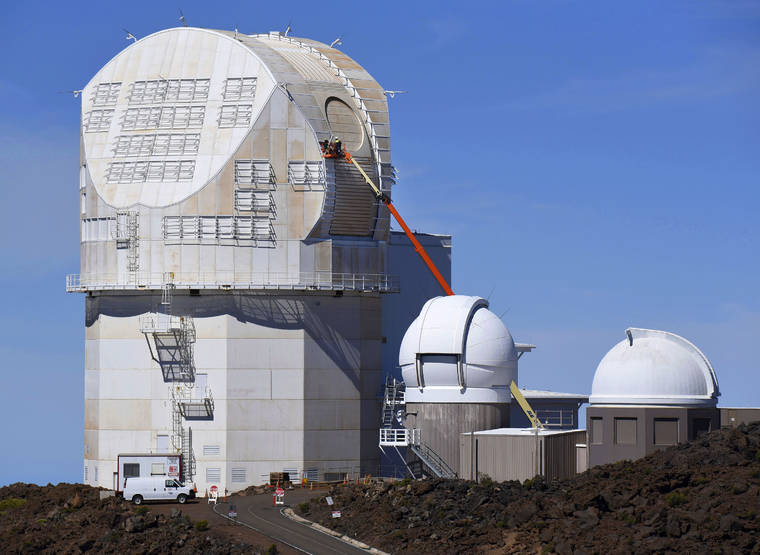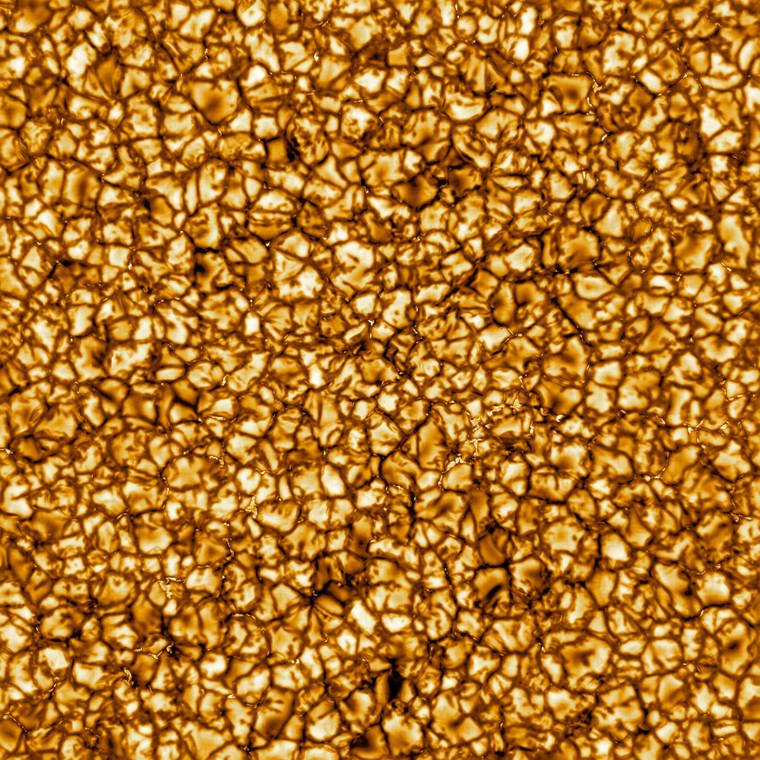On Wednesday, astronomers released what they said were the most detailed images ever taken of the surface of our sun.
As seen through the brand-new Daniel K. Inouye Solar Telescope on Maui, the sun looks like a boiling pot of popcorn, belying the notion of a bland yellow orb.
Seen from afar, stars are gentle twinkling harbingers of romance and of the mysterious secret order of the universe. Grist for campfire philosophizing and armchair astrobiology.
Up close it is a different story.
Here, 93 million miles from the nearest star — the one we call the sun — the creatures of Earth eke out a living on the edge of almost incomprehensible violence. Every second, thermonuclear reactions in the center of the sun turn 5 million tons of hydrogen into pure energy. That energy makes it way outward, through boiling gas pocked with magnetic storms that crackle, whirl and lash space with showers of electrical particles and radiation.
Space weather, these showers are called. On Earth it can shut down the power grid and render satellites blind. A recent study by scientists at the University of Warwick in England concluded that the sun’s most powerful “superstorms” occur about once every 25 years.
In outer space the sun’s stream can endanger astronauts. Next to weightlessness and boredom, the radiation hazards from space weather are considered the biggest obstacles to human travel to Mars and beyond.
Caught in striking detail, the sun’s face is divided into “kernels”: cell-like structures, each about the size of Texas, that carry heat from the inside of the sun to the outside. Hot gas rises in the bright centers of the cells, cools and then sinks back down in the dark lanes separating the cells.
The images were taken as part of the initial test, known as “first light,” of the Inouye telescope, which was built by the National Science Foundation atop Haleakala. Haleakala means “house of the sun” in Hawaiian. What better place to build the world’s biggest telescope devoted to the sun?
The telescope was named for Daniel K. Inouye, the Hawaii senator who died in 2012 and is credited with helping build Hawaii into an astronomical powerhouse. The telescope has a primary mirror that is about 158 inches in diameter.
More than 7 miles of underground piping are needed just to get rid of the solar heat the telescope collects, and to keep the instrument cool. The greater size of the mirror, abetted by adaptive optics that reduce atmospheric blurring, offers higher resolution — more detail of the pop, crackle and snap on the sun’s surface.
Somehow this process heats the solar gases from about 5,000 degrees Fahrenheit as they rise from the surface. In the corona that billows outward from the surface in streamers seen during solar eclipses, temperatures reach 1 million degrees. How does it happen?
Joining the Inouye telescope in this coronal detective work are NASA’s Parker Solar Probe, now orbiting the sun, and the joint NASA-European Space Agency Solar Orbiter, scheduled to be launched next week, in what amounts to a new coordinated effort to investigate our old shining friend.
© 2020 The New York Times Company


